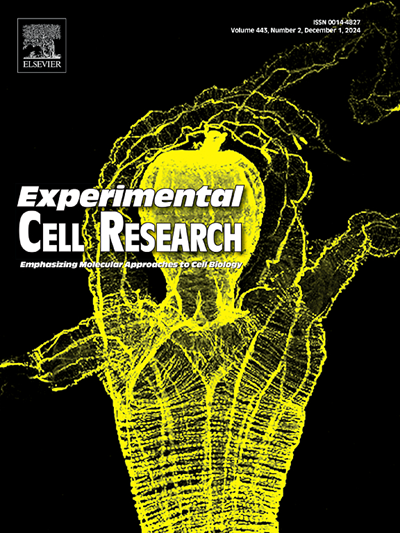雪松醇衍生物通过Ca2+-CaMK-FoxO3a信号通路调节肌肉生长抑制素转录,从而减轻肌肉萎缩
IF 3.3
3区 生物学
Q3 CELL BIOLOGY
引用次数: 0
摘要
肌肉减少症是一种进行性和全身性肌肉萎缩综合征,其特征是肌肉力量和质量的丧失。虽然许多候选药物已经开发用于治疗肌肉减少症,但由于不良或脱靶效应,它们的结果是不成功的。在这项研究中,我们鉴定了一种雪松醇衍生物,它是一种具有生物活性的倍半萜,对肌肉萎缩具有实质性的抑制作用。我们证明了雪松类似物通过转录调节调节肌肉生长抑制素的表达,并且雪松衍生物比原始形式更有效地调节这种表达。雪松醇衍生物通过小鼠嗅觉受体23 (MOR23)刺激Ca2+,并以钙依赖的方式诱导磷酸化- camkii和FoxO3a之间的相互作用。在动物模型中,小鼠的指长伸肌(EDL)和比目鱼肌中肌生长抑制素和MuRF1的转录水平表达较低。这些研究结果表明,在体外和体内模型中,雪松醇衍生物通过抑制肌肉生长抑制素和MuRF1的表达来抑制肌肉减少症,从而表明雪松醇衍生物可能是潜在的治疗肌肉减少症的药物。本文章由计算机程序翻译,如有差异,请以英文原文为准。
Cedrol derivative attenuates muscle atrophy through regulation of myostatin transcription via Ca2+-CaMK-FoxO3a signaling pathways
Sarcopenia is a progressive and generalized muscle wasting syndrome characterized by loss of muscle strength and mass. Although many drug candidates have been developed to treat sarcopenia, their results were unsuccessful due to adverse or off-target effects. In this study, we identified a cedrol derivative which is a bioactive sesquiterpene having substantial suppressive effects on muscle atrophy. We demonstrated that the cedrol analog regulated myostatin expression via transcriptional regulation and that the cedrol derivative regulated this expression more effectively than the original form. Cedrol derivative stimulated Ca2+ via the mouse olfactory receptor 23 (MOR23) and induced interactions between phospho-CaMKII and FoxO3a in a calcium-dependent manner. In animal models, the transcript-level expressions of myostatin and MuRF1 were lower in the extensor digitorum longus (EDL) and soleus muscles of mice fed with cedrol-derivative diet. These findings reveal that cedrol derivative suppresses sarcopenia by inhibiting myostatin and MuRF1 expressions in both in vitro and in vivo models, thus suggesting that cedrol derivatives can be potential therapeutic agents for sarcopenia.
求助全文
通过发布文献求助,成功后即可免费获取论文全文。
去求助
来源期刊

Experimental cell research
医学-细胞生物学
CiteScore
7.20
自引率
0.00%
发文量
295
审稿时长
30 days
期刊介绍:
Our scope includes but is not limited to areas such as: Chromosome biology; Chromatin and epigenetics; DNA repair; Gene regulation; Nuclear import-export; RNA processing; Non-coding RNAs; Organelle biology; The cytoskeleton; Intracellular trafficking; Cell-cell and cell-matrix interactions; Cell motility and migration; Cell proliferation; Cellular differentiation; Signal transduction; Programmed cell death.
 求助内容:
求助内容: 应助结果提醒方式:
应助结果提醒方式:


